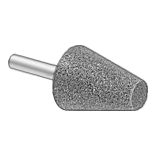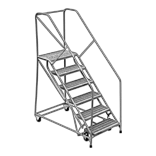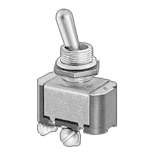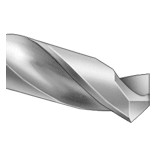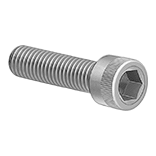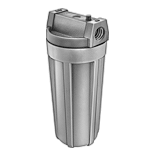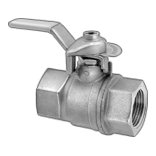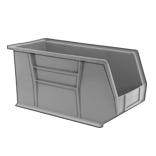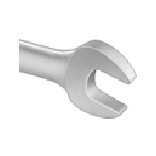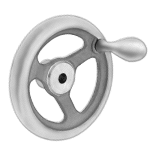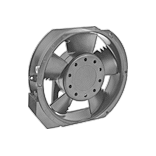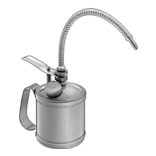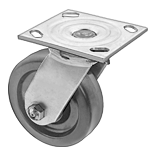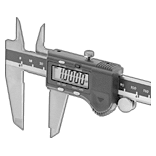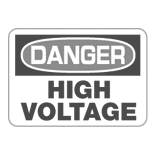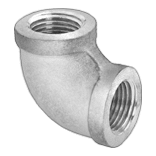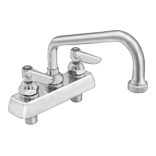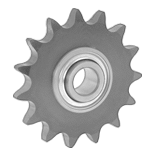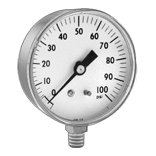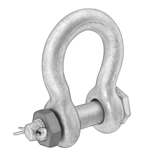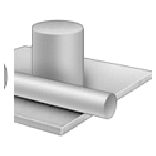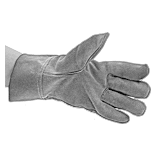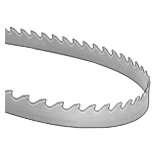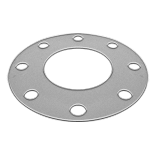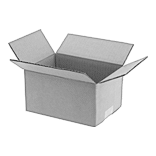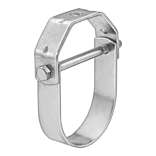About Hammers
More
About Plastic Hammer Faces
More
High-Visibility Dead Blow Mallets
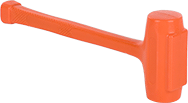
A fluorescent orange color makes these mallets easy to see. The head is loaded with metal shot for added weight and a controlled impact with minimal rebound. All are suitable for driving chisels and striking work without damaging its surface. Choose a lighter weight mallet for tapping work into place and driving a chisel to make small cuts. Use heavier weight mallets when assembling joints, dislodging stuck parts, and making aggressive cuts with a chisel. Longer mallets allow for more powerful swings. A textured grip provides slip resistance.
Polyurethane rubber faces resist oils and solvents and won't crack under high impact. They're softer than metal faces, so they're good for striking plastic, wood, and sheet metal. All have a face hardness rating for comparing their hardness with other rubber and plastic faces. Soft faces have a hardness similar to that of a tire tread.
| Head Wt. | Face Dia. | Face Hardness Rating | Face Color | Overall Lg. | Handle Material | Grip Style | Handle Replaceable | Each | |
Polyurethane Rubber Face | |||||||||
|---|---|---|---|---|---|---|---|---|---|
| 1 3/8 lbs. | 1 1/2" | Soft | Fluorescent Orange | 11 3/4" | Polyurethane Rubber with Steel Core | Textured | Nonreplaceable | 0000000 | 000000 |
Replaceable-Face Dead Blow Mallets
The replaceable faces can be changed out when worn. These mallets have a head loaded with metal shot for added weight and a controlled impact with minimal rebound. Use them to drive chisels and strike work without damaging its surface. The polyurethane rubber faces resist oils and solvents and won't crack under high impact; they're often used on plastic, wood, and sheet metal. To avoid marring when tapping or striking, choose a face that's softer than your workpiece. Lighter weight mallets are good for tapping work into place and driving a chisel to make small cuts. Use heavier weight mallets when assembling joints, dislodging stuck parts, and making aggressive cuts with a chisel. Longer mallets allow for more powerful swings. The handle has a ribbed grip for slip resistance.
Medium faces have a hardness that's suitable for most general purpose applications. Extra-hard faces have a hardness similar to that of a hard hat.
Hickory handles resist vibration.

Face Thread | |||||||||||
|---|---|---|---|---|---|---|---|---|---|---|---|
| Head Wt. | Face Dia. | Face Hardness Rating (Face Color) | Size | Type | Overall Lg. | Head Material | Handle Material | Grip Style | Handle Replaceable | Each | |
Round Screw-In Polyurethane Rubber Face | |||||||||||
| 1 3/8 lbs. | 1 1/4" | Medium (Green) × Extra Hard (Black) | 5/16"-18 | UNC | 12" | Iron | Hickory | Ribbed | Replaceable | 0000000 | 000000 |
| 1 3/8 lbs. | 1 1/2" | Medium (Green) × Extra Hard (Black) | 5/16"-18 | UNC | 13" | Aluminum | Hickory | Ribbed | Replaceable | 0000000 | 00000 |

Soft faces have a hardness similar to that of a tire tread.
Medium faces have a hardness that's suitable for most general purpose applications.
Hard faces have a hardness similar to that of a bowling ball.
Extra-hard faces have a hardness similar to that of a hard hat.
Mallets

Drive chisels and strike work without damaging its surface. To avoid marring, choose a mallet with faces that are softer than your workpiece. Lighter weight mallets are good for tapping work into place and driving a chisel to make small cuts. Use heavier weight mallets when assembling joints, dislodging stuck parts, and making aggressive cuts with a chisel. Longer mallets allow for more powerful swings.
Rawhide faces are more durable than plastic and won't distort the surface of soft sheet metal, such as brass, aluminum, and copper.
Hickory faces are a good choice for light sheet metal work and striking wood.
Hickory handles resist vibration.
Mallets cannot be sold to the listed areas due to import regulations.

| Head Wt. | Face Dia. | Overall Lg. | Grip Style | Handle Replaceable | Cannot Be Sold To | Each | ||
Rawhide Head with Hickory Handle | ||||||||
|---|---|---|---|---|---|---|---|---|
| D | 1 3/8 lbs. | 2 3/4" | 13 1/2" | Plain | Replaceable | Canada | 0000000 | 000000 |

| Head Wt. | Face Dia. | Overall Lg. | Grip Style | Handle Replaceable | Each | ||
Hickory Handle | |||||||
|---|---|---|---|---|---|---|---|
| D | 1 3/8 lbs. | 3" | 13 1/2" | Plain | Nonreplaceable | 0000000 | 000000 |
Replaceable-Face Mallets

Replace faces when they become worn rather than replacing the entire tool. These mallets are suitable for driving chisels and striking work without damaging its surface. Choose a mallet with a face that's softer than your workpiece to avoid marring it when tapping or striking. Lighter weight mallets are good for tapping work into place and driving a chisel to make small cuts. Use heavier weight mallets when assembling joints, dislodging stuck parts, and making aggressive cuts with a chisel. Longer mallets allow for more powerful swings.
Mallets with two face materials can be used for a wider range of applications than other mallets.
Rubber and plastic faces are softer than metal faces, so they're good for striking plastic, wood, and sheet metal. All have a face hardness rating for comparing their hardness with other rubber and plastic faces. Hard faces have a hardness similar to that of a bowling ball.
Steel faces are the hardest metal faces we offer. Use them to drive chisels, masonry drills, and nails.Steel handles are stronger than wooden handles but have less vibration resistance.
Textured grips provide slip resistance.
Sledge Hammers

Demolish material, form metal, and drive punches, chisels, and masonry drills. For demolition work, choose a hammer with a face that's harder than your workpiece. Longer and heavier hammers deliver greater impact.
10" to 16" long hammers are also known as engineers', drilling, club, and crack hammers. Use them for light demolition and tasks where longer hammers don't have room to swing.
Bronze faces are good for striking non-ferrous metal, such as aluminum, nickel, and titanium.
Hickory handles resist vibration.
Textured and ribbed grips provide slip resistance.
Nail Hammers




Drive nails with the flat, steel face and remove them with the claw on the other end of the head.
Curved-claw hammers provide high leverage for nail removal. Straight-claw hammers are also known as framing hammers. They're a good choice for ripping and prying wood in addition to nail removal, but they do not remove nails as efficiently as curved-claw hammers.
Serrated face prevents the head from slipping when striking.
Steel and aluminum handles are stronger than hickory handles but have less vibration resistance.
Textured and ribbed grips provide slip resistance.
Masonry Hammers
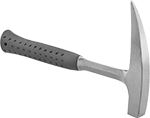
Pry, shape, chip, and cut masonry and stone.
Pick-head hammers are also known as geologists' hammers and are commonly used to split and chip rocks. Steel handles are stronger than wooden handles but have less vibration resistance.
Textured grips provide slip resistance.
| Head Wt., lbs. | Face Lg. | Face Wd. | Face Material | Overall Lg. | Handle Replaceable | Each | |
Textured Grip with Smooth-Face Pick Head | |||||||
|---|---|---|---|---|---|---|---|
Steel Handle | |||||||
| 1 3/8 | 7/8" | 13/16" | Steel | 12 3/4" | Nonreplaceable | 000000 | 000000 |
